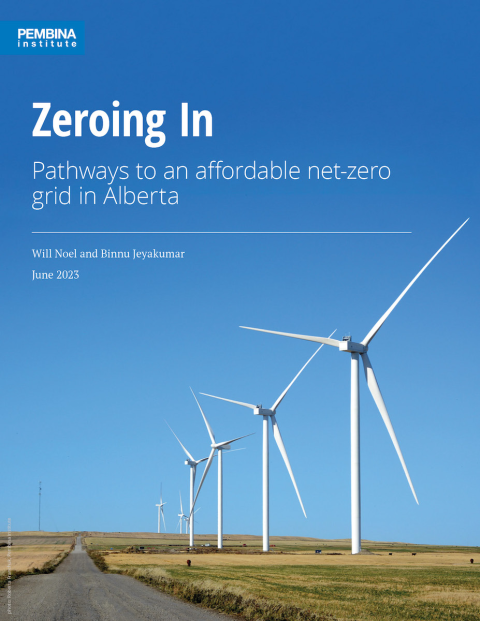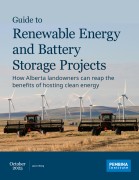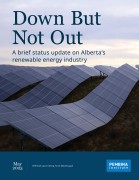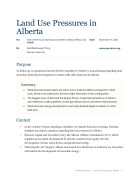Alberta is at an inflection point in the evolution of its electricity grid. By the end of this year, it will have successfully phased out coal-fired generation, which was the dominant source of electricity just six years ago. At the same time, it is rapidly expanding its renewable fleet, building more wind and solar than the rest of Canada.
Canada and the U.S. (along with other G7 countries such as the U.K. and Germany) have committed to net-zero or clean grids by 2035. These goals are being driven by the fact that a net-zero electricity grid is fundamental to a net-zero economy, where economy-wide decarbonization will largely be achieved through broad electrification. Alberta will need to decarbonize its grid to remain competitive with its neighbours and peer jurisdictions.
The Pembina Institute partnered with the University of Alberta to model several pathways through which Alberta could decarbonize its electricity grid in an affordable and reliable manner. We examine six decarbonization scenarios compared to the latest Long-term Outlook (LTO) analysis by the Alberta Electric System Operator (AESO).
Our research shows that significant decarbonization can be achieved between 2022 and 2035 and would be $22-28 billion cheaper than predicted by AESO. A decarbonized grid would also help save Albertans more than $600 per household in annual electricity costs.
With an abundance of renewable resources readily available for electricity generation, Alberta has a clean energy advantage. Our modelling shows wind, solar and existing hydro could supply 45-58% of the province’s electricity demand by 2035. During this time, Alberta would increase its wind and solar fleet by three to five times its current combined installed capacity, creating significant opportunities for employment in the clean energy sector.
Alberta is already becoming the renewable energy capital of Canada. More than three-quarters of solar and wind generation capacity built in Canada last year was in Alberta. This underscores the unique prospects for Alberta in growing its energy exports. In all our scenarios, Alberta – which historically and currently imports more electricity than it exports –becomes a net exporter of electricity by 2025.
It is critical that Alberta commit to achieving a net-zero grid by 2035. This, in combination with establishing regulatory requirements or market policies, initiatives, and supports, is needed to provide policy certainty to generators, attract investments to Alberta, and enable the lowest-cost outcomes for ratepayers.
Decisions made today will dictate the configuration and affordability of Alberta’s grid for decades to come. In order toleverage Alberta’s renewable energy advantage and to advance an affordable, reliable and clean electricity grid, we recommend:
- Alberta commit to a provincial net-zero grid by 2035 and develop a made-in Alberta plan to achieve it.
- Alberta and the federal government enable the continued deployment of low-cost proven technologies such as renewable energy, battery storage, and demand-side measures; and help de-risk urgent, strategic investments in carbon capture and longer-term energy storage.
- Provincial (and U.S. state) governments collaborate on expanding interties, and the federal government provide financial support to enable these large, inter-jurisdictional projects to proceed.
- The federal government develop and implement a robust Clean Electricity Regulation (CER) and enhance industrial carbon pricing.
- Federal and provincial governments work with industry and stakeholders to ensure equitable opportunity for economic development and employment in the clean economy.









